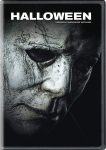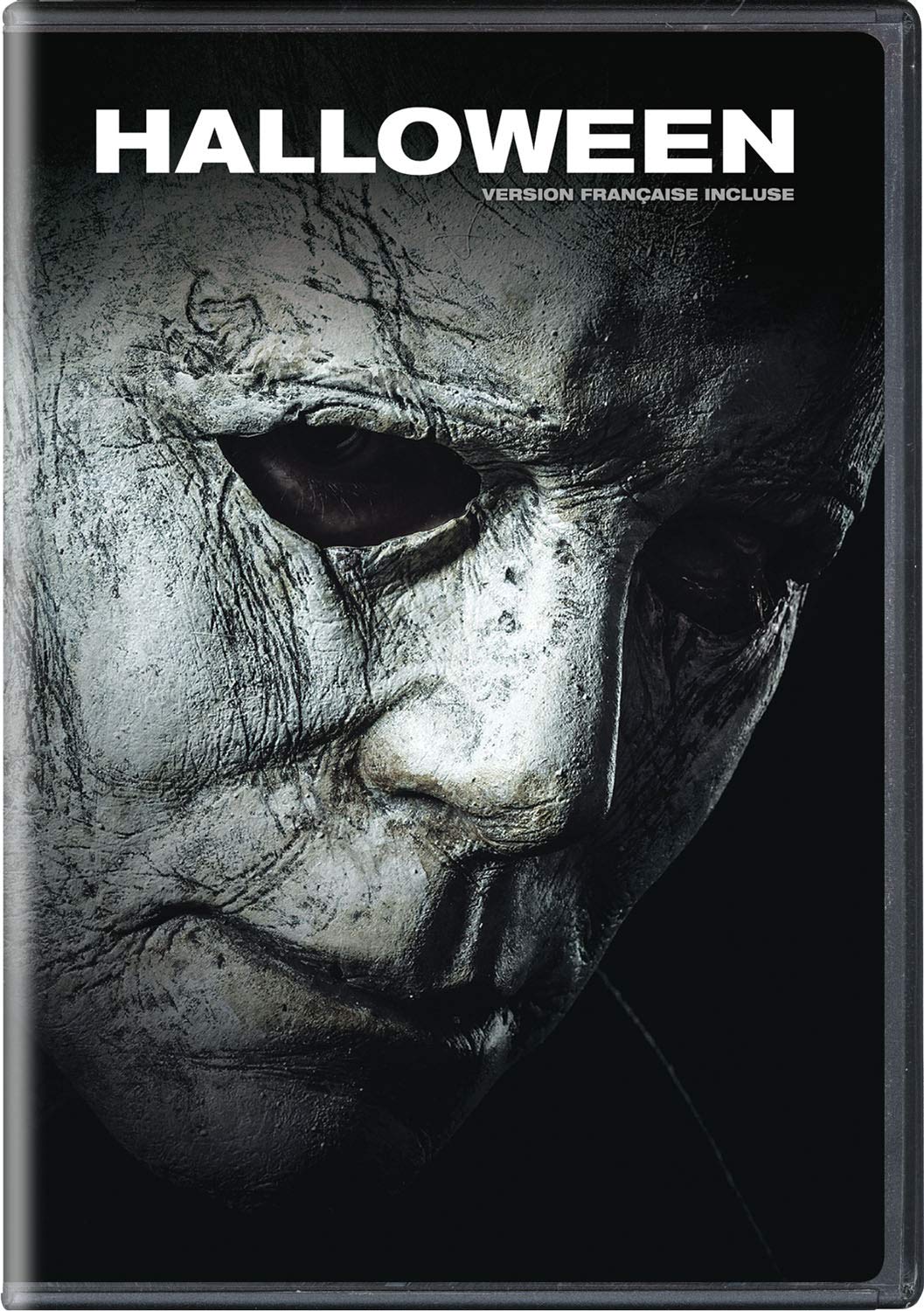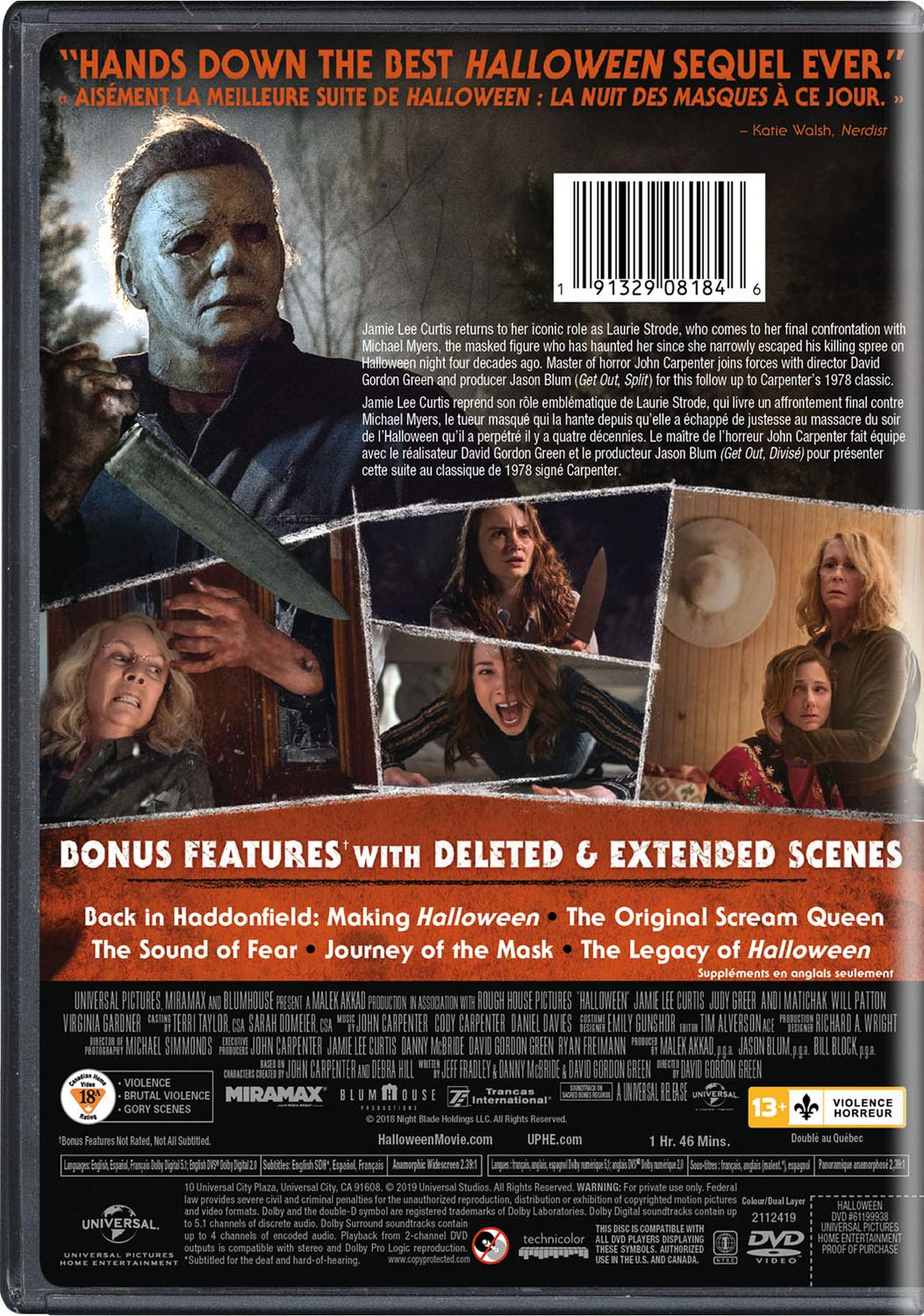
Halloween Review Halloween 2007 – Oemiu
Halloween Review: A Retrospective on Halloween 2007
It’s difficult to believe that over fifteen years have passed since the release of Rob Zombie’s reimagining of John Carpenter’s classic, Halloween. “Halloween” (2007), as it’s simply known, arrived with a tidal wave of hype and controversy, promising a darker, grittier take on Michael Myers’ origin story. For many horror fans, this was a highly anticipated event, a chance to revisit a beloved franchise with a fresh perspective. However, the film’s reception was – and remains – deeply divided. Some praised its unflinching violence and exploration of Michael’s troubled childhood, while others criticized its departure from the suspenseful atmosphere of the original and its over-reliance on gore. Looking back, it’s important to consider the context surrounding its release and the expectations it had to grapple with. Horror films in the mid-2000s were often characterized by their intense violence and “torture porn” elements, a trend that undeniably influenced Zombie’s approach. But to truly understand the impact of this film, we need to dissect its narrative, its directorial choices, and its long-lasting effect on the Halloween legacy. What did this film get right? What did it get wrong? And more importantly, how does it hold up today as a piece of horror cinema? Revisiting the 2007 Halloween remake is a journey into a complex and often uncomfortable chapter in horror history, one that continues to spark debate and discussion.
Deconstructing Michael: A Dive into the Narrative of Rob Zombie’s Halloween
Rob Zombie’s “Halloween” dedicates a significant portion of its runtime to exploring Michael Myers’ childhood, a decision that proved to be one of the film’s most polarizing aspects. Unlike the original, which kept Michael’s motives largely ambiguous, this remake attempts to provide a psychological explanation for his violent tendencies. We are introduced to a young Michael living in a dysfunctional household, marked by abuse, neglect, and a general lack of empathy. He is portrayed as a troubled boy, prone to violent outbursts and exhibiting disturbing behaviors. This backstory aims to humanize Michael, to make him more than just a faceless killing machine. The film argues, in effect, that Michael was a product of his environment, a victim of circumstance who was ultimately destined for a life of violence. However, this approach fundamentally alters the nature of the character. By providing a concrete explanation for his actions, the film arguably diminishes the inherent terror and mystique that made Michael Myers so compelling in the first place. The original Michael was terrifying precisely because he was an enigma, a seemingly motiveless force of evil. Zombie’s version, while undeniably brutal and disturbing, loses some of that power by attempting to explain the unexplainable.
Furthermore, the film’s depiction of Michael’s childhood has been criticized for its graphic violence and its reliance on stereotypical portrayals of troubled youth. Some argue that it sensationalizes mental illness and reduces complex psychological issues to mere plot devices. Others contend that it simply fails to provide a convincing explanation for Michael’s later actions, leaving viewers unconvinced that his troubled upbringing could fully account for his transformation into a remorseless killer. After the childhood sequence, the film follows Michael’s escape from Smith’s Grove Sanitarium and his return to Haddonfield. This section of the movie closely mirrors the plot of the original Halloween, but with a significantly increased level of violence and gore. While the original relied on suspense and atmosphere to create a sense of dread, Zombie’s remake opts for a more visceral and in-your-face approach. The kills are more graphic, the chase scenes more intense, and the overall tone is much darker and more nihilistic. This stylistic choice reflects Zombie’s signature aesthetic, which is characterized by its raw energy and its willingness to push boundaries. However, it also contributes to the film’s divisive reception, as some viewers found the excessive violence to be gratuitous and unnecessary. Whether you find the extended origin story compelling or not, it is undeniable that Zombie took a massive risk changing the foundations of such a well-known franchise. The effects of Zombie’s “Halloween 2007” are still being felt today.
Directorial Style and Production Value: A Deep Dive into Zombie’s Vision
Rob Zombie’s directorial style is immediately recognizable throughout “Halloween 2007.” He brings his signature aesthetic, characterized by its gritty realism, intense violence, and heavy metal influences, to the Halloween franchise. His use of shaky camera work, quick cuts, and jarring sound design creates a sense of chaos and unease, immersing the viewer in the film’s disturbing world. Unlike Carpenter’s methodical and deliberate approach, Zombie favors a more visceral and frenetic style, reflecting the film’s overall tone of unrelenting violence. This stylistic choice is evident in the film’s many chase scenes, which are characterized by their breathless pacing and their brutal physicality. Zombie also makes extensive use of flashbacks and dream sequences to further explore Michael’s psychological state, often employing surreal imagery and distorted perspectives to convey his inner turmoil. These stylistic flourishes add a layer of complexity to the film’s narrative, but they also contribute to its divisive reception, as some viewers found them to be distracting or unnecessary. One could argue that the director brought too much of himself to the remake, overriding the original film’s suspenseful undertones and replacing them with gore.
The film’s production value is undeniably high. The cinematography is sharp and atmospheric, capturing the bleakness of Haddonfield and the claustrophobia of Smith’s Grove Sanitarium. The special effects are impressive, particularly the practical effects used to create the film’s graphic violence. Zombie’s attention to detail is evident in the film’s set design, which meticulously recreates the iconic locations from the original Halloween, while also adding its own distinct touches. The film’s soundtrack, which features a mix of classic Halloween themes and original heavy metal compositions, further enhances its unsettling atmosphere. While not all horror fans loved the new soundtrack, it certainly did a great deal to separate the remake from the original. The casting choices are also noteworthy. Tyler Mane delivers a formidable performance as the adult Michael Myers, embodying the character’s physical presence and menacing demeanor. Malcolm McDowell provides a compelling portrayal of Dr. Loomis, capturing the character’s intelligence and his growing fear of Michael. Scout Taylor-Compton brings a vulnerability and resilience to the role of Laurie Strode, making her a more relatable and sympathetic character than in the original. Ultimately, the high production values contribute to the film’s overall sense of realism and immersion, but they also highlight its reliance on violence and gore, which some viewers found to be off-putting. Zombie wanted to make an ultra-realistic retelling of the Halloween story, and he certainly seemed to succeed in that endeavor. The question is, did realism truly improve the story?
Comparing 2007’s Halloween to the Original: Strengths and Weaknesses
Comparing Rob Zombie’s “Halloween” to John Carpenter’s original is essential to understanding its impact and its place in horror cinema. The two films share the same basic plot, but they diverge significantly in their approach to character development, tone, and overall aesthetic. The original Halloween is a masterpiece of suspense, relying on atmosphere, suggestion, and carefully crafted visuals to create a sense of dread. It deliberately avoids graphic violence, instead focusing on the psychological terror that Michael Myers inflicts on his victims. Zombie’s remake, on the other hand, embraces violence and gore, aiming for a more visceral and in-your-face experience. It attempts to provide a psychological explanation for Michael’s actions, delving into his troubled childhood and exploring his inner turmoil. The following table highlights some key differences:
| Feature | Original Halloween (1978) | Halloween (2007) |
|---|---|---|
| Tone | Suspenseful, atmospheric, psychological terror | Violent, gritty, psychological exploration |
| Violence | Implied, minimal on-screen gore | Explicit, graphic, heavy gore |
| Michael Myers’ Motivation | Ambiguous, unexplained evil | Explained through childhood trauma |
| Pacing | Slow burn, deliberate | Faster-paced, more frantic |
| Dr. Loomis’ Character | Mysterious, determined | More sympathetic, cynical |
The original Halloween’s strengths lie in its simplicity, its iconic characters, and its masterful use of suspense. Its weaknesses may be its lack of character depth and its reliance on dated special effects. The 2007 Halloween remake’s strengths are in its exploration of Michael Myers’ backstory, its high production values, and its willingness to push boundaries. Its weaknesses include its excessive violence, its departure from the original’s tone, and its arguably unnecessary attempt to explain the unexplainable. Ultimately, which film is “better” is a matter of personal preference. Some viewers prefer the original’s understated horror and its timeless quality, while others appreciate the remake’s grittier realism and its exploration of Michael’s psychology. However, it is undeniable that both films have left a significant mark on horror cinema and continue to be debated and discussed by fans and critics alike. While some people appreciate the modern update found in the **Halloween 2007 remake**, others find it misses the point of what made the original so great.
The Long-Term Impact and Legacy of the Halloween 2007 Remake
The impact and legacy of Rob Zombie’s Halloween 2007 are complex and multifaceted. While the film was a commercial success, grossing over $80 million worldwide, its critical reception was decidedly mixed. Some critics praised its originality and its willingness to take risks, while others criticized its excessive violence and its departure from the spirit of the original. Regardless of its critical reception, the film undeniably had a significant impact on the Halloween franchise and on the horror genre as a whole. It ushered in a new era of remakes and reboots, inspiring other filmmakers to revisit classic horror properties with a more modern and grittier sensibility. It also helped to solidify Rob Zombie’s reputation as a controversial and boundary-pushing director, further cementing his place as a major figure in the horror genre.
The film’s influence can be seen in subsequent Halloween sequels and reboots, which have often attempted to emulate its darker tone and its emphasis on violence. However, none have achieved the same level of notoriety or generated the same level of debate. The “Halloween 2007” remake also sparked a broader discussion about the nature of remakes and reboots, raising questions about whether it is possible to improve upon a classic or whether it is better to simply leave it untouched. This debate continues to rage today, with fans and critics alike arguing about the merits and drawbacks of revisiting beloved properties. Furthermore, the film’s exploration of Michael Myers’ childhood has had a lasting impact on the character’s mythology, influencing subsequent interpretations of his origins and motivations. While some fans reject Zombie’s version of Michael’s backstory, others find it to be a compelling and disturbing addition to the Halloween mythos. The film will be discussed and dissected for years to come. Whether the lasting legacy of *Halloween 2007* is a positive or a negative for the horror genre as a whole remains to be seen.
Frequently Asked Questions (FAQ)
What was the main criticism of Rob Zombie’s Halloween 2007?
The main criticism of Rob Zombie’s “Halloween 2007” revolved around its departure from the suspenseful and atmospheric horror of the original John Carpenter film. Many felt that the remake relied too heavily on graphic violence and gore, sacrificing the psychological terror that made the original so effective. Furthermore, the film’s attempt to provide a detailed backstory for Michael Myers, exploring his troubled childhood and psychological issues, was seen by some as diminishing the character’s mystique and inherent evil. By trying to explain Michael’s motivations, the film arguably removed the ambiguity that made him such a compelling and terrifying figure in the first place. Some viewers felt the extended origin story was unnecessary and detracted from the overall horror experience.
How does the 2007 Halloween compare to other remakes in the horror genre?
“Halloween 2007” stands out among horror remakes due to its director’s distinct and polarizing vision. While many remakes attempt to update classic films for a modern audience while staying true to the original’s core elements, Zombie’s film takes a more radical approach, reimagining the story and characters in his own unique style. Compared to remakes that are more faithful adaptations, such as “The Thing” (2011) or “The Fly” (1986), “Halloween 2007” is a much more significant departure from its source material. This makes it a more divisive film, with some viewers appreciating its originality and boldness, while others criticizing its lack of respect for the original. It also started a trend of more gritty remakes in the 2000’s.
Was Halloween 2007 a commercial success?
Yes, “Halloween 2007” was a commercial success. Made on a budget of approximately $15 million, the film grossed over $80 million worldwide. This made it one of the highest-grossing horror remakes of all time. Its commercial success undoubtedly contributed to the decision to greenlight a sequel, “Halloween II” (2009), also directed by Rob Zombie. The film’s box office performance demonstrates its appeal to a broad audience, even though it was a controversial film among fans of the original. This success showed that reimaging films for a new audience could be a lucrative business.
How did Malcolm McDowell’s performance as Dr. Loomis differ from Donald Pleasence’s?
Malcolm McDowell’s portrayal of Dr. Loomis in “Halloween 2007” differed significantly from Donald Pleasence’s iconic performance in the original. Pleasence played Loomis as a determined and somewhat mysterious figure, driven by a deep understanding of Michael Myers’ evil and a desire to stop him at any cost. McDowell, on the other hand, portrayed Loomis as a more cynical and world-weary character, who seems to be more motivated by fame and fortune than by genuine concern for his patients or the safety of Haddonfield. McDowell’s Loomis is also more prone to exploiting Michael’s story for personal gain, making him a less heroic and more morally ambiguous figure than Pleasence’s version.
Why did Rob Zombie choose to focus so much on Michael Myers’ childhood?
Rob Zombie stated that he wanted to explore the origins of Michael Myers’ evil and to understand what factors contributed to his transformation into a remorseless killer. He believed that by delving into Michael’s childhood, he could provide a more nuanced and complex portrayal of the character, making him more than just a simple boogeyman. While Zombie’s decision to focus on Michael’s childhood was controversial, it was a key element of his vision for the remake. It was also his way of distinguishing his film from the original and establishing his own unique take on the Halloween mythos.
What are some of the most memorable scenes in Halloween 2007?
Some of the most memorable scenes in “Halloween 2007” include the opening sequence depicting Michael Myers’ troubled childhood, which culminates in his first murders. The scenes set in Smith’s Grove Sanitarium, showcasing Michael’s disturbing behavior and Dr. Loomis’ attempts to understand him, are also particularly memorable. The film’s violent and graphic kills, such as the brutal murders of Judith Myers and Bob Simms, are also standouts, although they are not for the faint of heart. Finally, the climactic confrontation between Michael and Laurie Strode is a memorable scene, albeit one that is significantly different from the original film’s ending.
How does Halloween 2007 fit into the broader Halloween franchise timeline?
“Halloween 2007” exists in its own separate timeline, completely divorced from the original Halloween films and their various sequels and reboots. It serves as a complete reimagining of the Halloween story, starting from the beginning and charting its own course. This means that the events of the original films, as well as the events of subsequent sequels like “Halloween II” (1981) or “Halloween: H20” (1998), are not considered canon within the timeline established by Zombie’s remake. The film is followed by “Halloween II” (2009), which continues the story from where the remake left off, but that film also exists in its own separate continuity. This makes understanding the **Halloween 2007 timeline** quite simple – it exists by itself.






![Scary Stories To Tell In The Dark [DVD]](https://oemiu.com/wp-content/uploads/2025/09/1757427628_Scary-Stories-To-Tell-In-The-Dark-DVD-Review-Best-336x220.jpg)
